How Should Women Train Their Chest
How should women train their chest?
Regarding fitness, one area that often gets overlooked in women’s routines is the chest. This might be due to a variety of misconceptions, including the fear of developing bulky muscles. However, training the chest is essential for balanced strength, improved posture, and overall upper body aesthetics. In this guide, Fitness Brother will walk you through everything you need to know about crafting an effective Chest Routine for Women.
Why Should Women Train Their Chest?
Balanced Strength
Training the chest helps to create a balanced physique. Many women focus on the lower body, but neglecting the upper body can lead to imbalances that affect overall strength and functionality.
Improved Posture
Strong chest muscles contribute to better posture. A well-developed chest can help counteract the rounding of the shoulders that often occurs from sitting for long periods or engaging in activities that focus on the front of the body.
Enhanced Aesthetics
While bulky muscles are a common concern, it’s important to understand that women naturally have lower levels of testosterone compared to men, making it difficult to build large muscles. Instead, training the chest can help enhance the natural contours and improve the appearance of the upper body.
Chest Routine for Women
Warm-Up
Before diving into your chest workout, it’s crucial to warm up your muscles to prevent injury. Spend 5-10 minutes on light cardio, such as brisk walking or cycling, followed by dynamic stretches focusing on the upper body.
Chest Exercises For Women
1. Pushups Exercise For Women
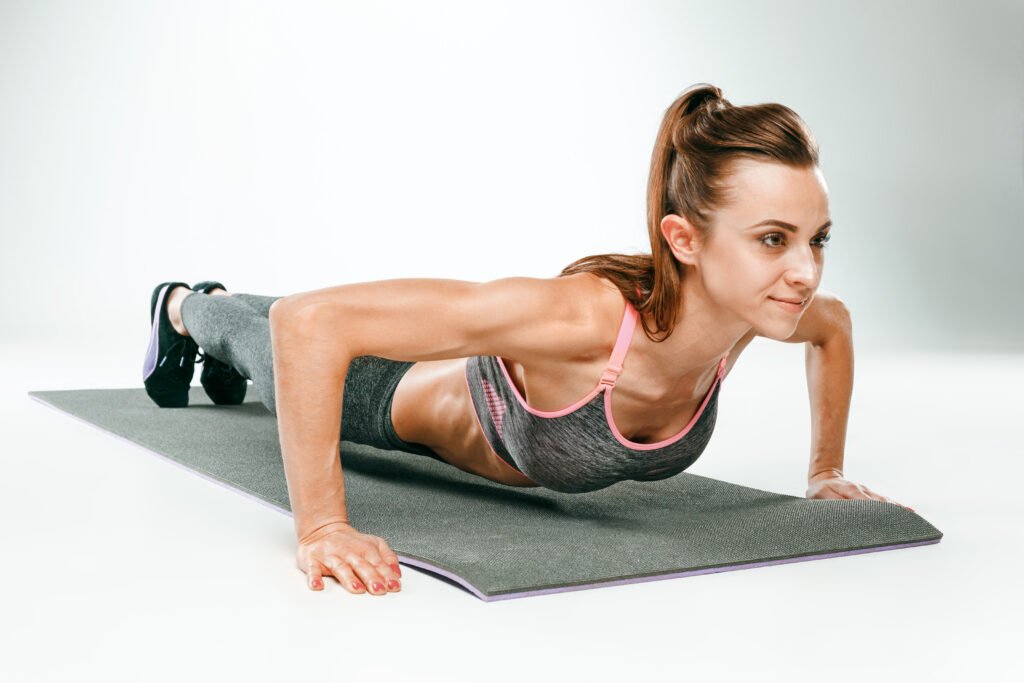
Push-united States of America is an extraordinary bodyweight exercise that goals the chest, shoulders, and triceps. They may be changed to healthy distinct fitness levels.
Standard Push-Up: Start in a plank role together with your fingers shoulder-width apart. Lower your body until your chest almost touches the floor, then beat back up.
Modified Push-Up: If a standard push-up is too challenging, perform the exercise on your knees.
Reps and Sets: 3 sets of 10-15 repetitions.
2. Dumbbell Bench Press
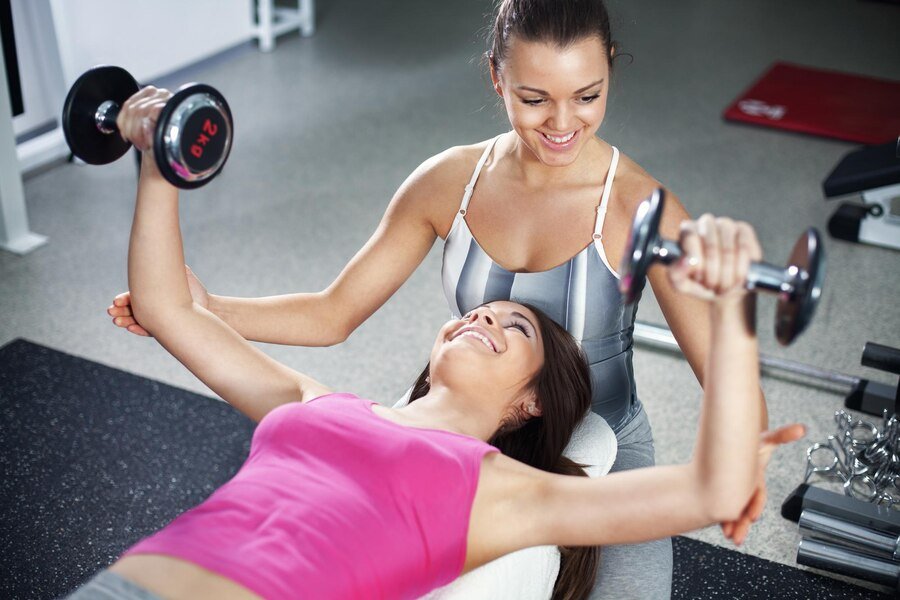
The dumbbell bench press isolates the chest muscles more effectively than push-ups and allows for greater control over the weight.
- Lie on a bench with a dumbbell in every hand.
- Position the dumbbells at chest level with your palms facing forward.
- Press the dumbbells up until your fingers are completely prolonged, then decrease them and backtrack.
Reps and Sets: 3 sets of 8-12 repetitions.
3. Chest Flyes Exercises
Chest flies target the pectoral muscles and can be performed on a flat or inclined bench.
- Lie on a bench holding a dumbbell in each hand, palms facing each other.
- With a slight bend in your elbows, lower the dumbbells out to the sides until your chest feels a stretch.
- Bring the dumbbells lower back to the beginning position by squeezing your chest muscular tissues.
Reps and Sets: 3 sets of 10-15 repetitions.
4. Incline Dumbbell Press
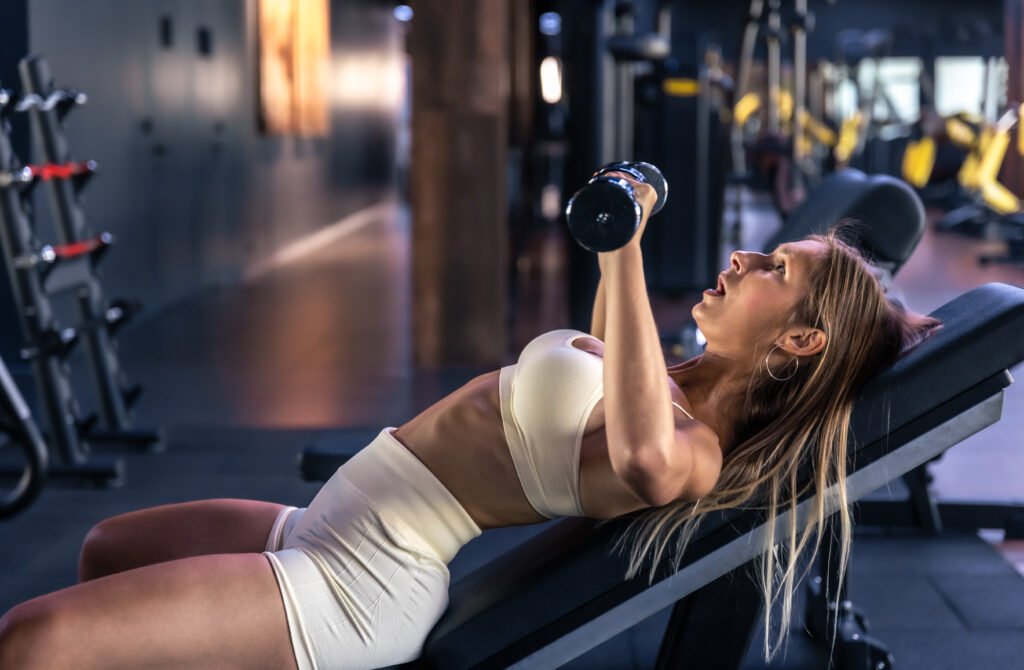
The incline dumbbell press emphasizes the upper portion of the chest.
- Set an adjustable bench to a forty-five-diploma perspective and lie back with a dumbbell in every hand.
- Press the dumbbells up and collectively, then decrease them back down.
Reps and Sets: 3 sets of 8-12 repetitions.
5. Cable Crossovers
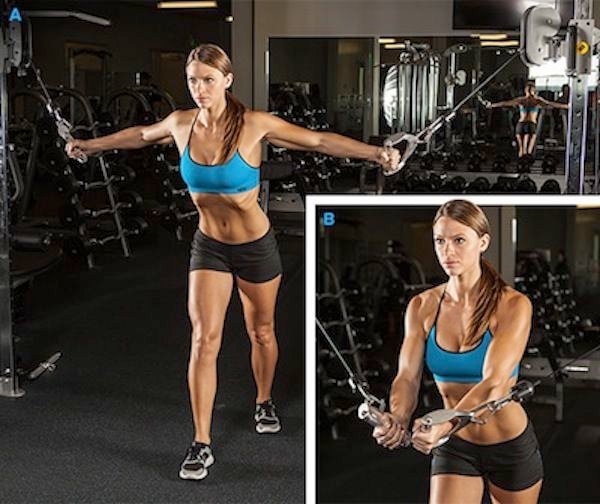
Cable crossovers are excellent for isolating the chest muscles and providing constant tension throughout the movement.
- Stand within the center of a cable device with the handles set at the shoulder top.
- With a slight bend in your elbows, pull the handles together in front of you, squeezing your chest.
- Slowly return to the starting position.
Reps and Sets: 3 sets of 15-12-10 repetitions.
Cool Down
After completing your chest routine, it’s important to cool down to aid in recovery and reduce muscle soreness. Perform static stretches focusing on the chest, shoulders, and arms, holding each stretch for 20-30 seconds.
Tips for Effective Chest Training
Consistency for Chest Routine for Women
Like any other muscle group, consistency is key to seeing results. Aim to incorporate chest exercises into your routine 1-2 times per week.
Proper Form For Chest Exercise
Maintaining proper form is crucial to prevent injuries and ensure you are effectively targeting the chest muscles. Focus on controlled actions and avoid the usage of momentum.
Progressive Overload
Gradually increase the weight or resistance you use for chest exercises to continue challenging your muscles and promoting growth.
Nutrition
Proper nutrition supports muscle growth and recovery. Ensure you are consuming enough protein and maintaining a balanced diet to fuel your workouts.
Conclusion
Training the chest is essential for women who want to achieve a balanced, strong, and aesthetically pleasing upper body. By incorporating a variety of exercises that target different areas of the chest, you can build strength, improve posture, and enhance your overall fitness with Fitness Brother. Remember to stay regular, recognize proper shape, and grow the depth of your workouts by step. With dedication and the right approach, you’ll see significant improvements in your chest strength and appearance.
FAQs Frequently Asked Questions
1. Will chest exercises make my breasts smaller?
No, chest exercises will not make your breasts smaller. Breast length is commonly determined by using genetics and body fat. Strengthening the chest muscles can enhance the appearance of your upper body, but it won’t reduce breast size.
2. How often should I train my chest?
For most women, training the chest 1-2 times per week is sufficient. This allows enough time for recovery while ensuring consistent progress.
3. Can I train my chest if I have shoulder pain?
If you have severe or even minor shoulder pain, it’s important to consult with a doctor before performing any chest exercises. Some modifications or alternative exercises may be necessary to avoid aggravating your shoulder.
4. Do I need to use heavy weights to see results?
You don’t necessarily need to use heavy weights. The key is to challenge your muscles with an appropriate amount of resistance. Start with a weight that allows you to complete the desired number of repetitions with good form, and gradually increase as you get stronger.

